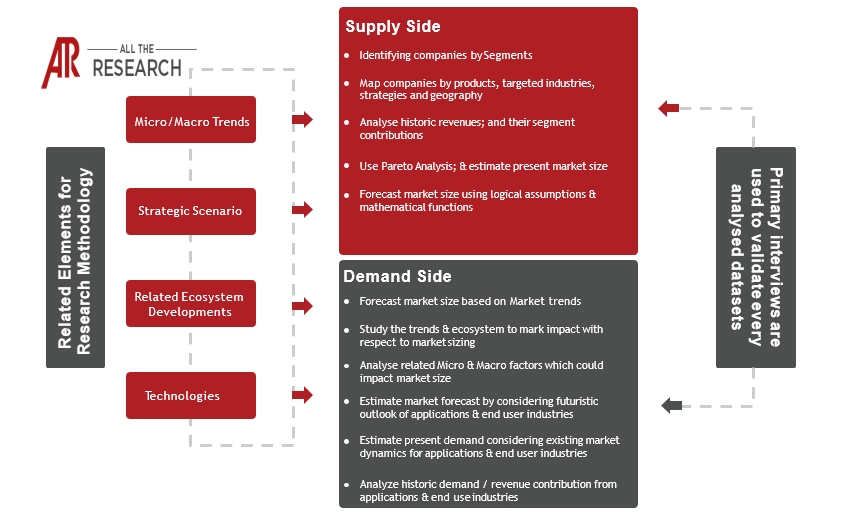Chapter 1. Research Objective
1.1 Objective, Definition & Scope
1.2 Methodology
1.2.1 Primary Research
1.2.2 Secondary Research
1.2.3 Market Forecast - Estimation & Approach
1.2.4 Assumptions & Assessments
1.3 Insights and Growth - Relevancy Mapping
1.3.1 FABRIC Platform
1.4 Data mining & efficiency
Chapter 2. Executive Summary
2.1 Accounts ReceivableAutomation Market Overview
2.2 Interconnectivity & Related markets
2.3 Ecosystem Map
2.4 Accounts ReceivableAutomation Market Business Segmentation
2.5 Accounts ReceivableAutomation Market Geographic Segmentation
2.6 Competition Outlook
2.7 Key Statistics
Chapter 3. Strategic Analysis
3.1 Accounts ReceivableAutomation Market Revenue Opportunities
3.2 Cost Optimization
3.3 Covid19 aftermath - Analyst view
3.4 Accounts ReceivableAutomation Market Digital Transformation
Chapter 4. Market Dynamics
4.1 DROC
4.1.1 Drivers
4.1.2 Restraints
4.1.3 Opportunities
4.1.4 Challenges
4.2 PEST Analysis
4.2.1 Political
4.2.2 Economic
4.2.3 Social
4.2.4 Technological
4.3 Market Impacting Trends
4.3.1 Positive Impact Trends
4.3.2 Adverse Impact Trends
4.4 Porter's 5-force Analysis
4.5 Market News - By Segments
4.5.1 Organic News
4.5.2 Inorganic News
Chapter 5. Market Segmentation
The Accounts ReceivableAutomation Market has been analysed to include the below segmentation:
By Component
• Solution
• Services
By Deployment Mode
• On-Premise
• Cloud
By Size
• Small And Medium Enterprises
• Large Enterprises
By Enduser
Industry
• Bfsi
• It And Telecom
• Manufacturing
• Healthcare
• Transportation And Logistics
• Other End-User Industries
Chapter 5A. Regional Segmentation
The Accounts ReceivableAutomation Market has been analysed by studying the following regions:
North America
• By Component
• By Deployment Mode
• By Size
• By Enduser
Industry
Europe
• By Component
• By Deployment Mode
• By Size
• By Enduser
Industry
APAC
• By Component
• By Deployment Mode
• By Size
• By Enduser
Industry
LatAm
• By Component
• By Deployment Mode
• By Size
• By Enduser
Industry
MEA
• By Component
• By Deployment Mode
• By Size
• By Enduser
Industry
**The Regions are further studied to analyse the major countries within the respective regions. The coverage of the country level data is dynamic and is updated regularly based on the market movements. Normally, the countries covered in the report include:
• North America - United States, Canada, Mexico;
• Europe - United Kingdom, France, Italy, Germany, Spain, Rest of Europe;
• Asia Pacific - China, India, Japan, South Korea, Rest of APAC;
• Middle East & Africa - South Africa, GCC Countries, Rest of MEA;
• Latin America - Brazil, Argentina, Rest of LatAm;
Chapter 6. Market Use case studies
Chapter 7. KOL Recommendations
Chapter 8. Investment Landscape
8.1 Accounts ReceivableAutomation Market Investment Analysis
8.2 Market M&A
8.3 Market Fund Raise & Other activity
Chapter 9. Accounts ReceivableAutomation Market - Competitive Intelligence
9.1 Company Positioning Analysis
9.1.1 Positioning - By Revenue
9.1.2 Positioning - By Business Score
9.1.3 Legacy Positioning
9.2 Competitive Strategy Analysis
9.2.1 Organic Strategies
9.2.2 Inorganic Strategies
Chapter 10. Key Company Profiles
*The Accounts ReceivableAutomation Market Report profiles companies based on the material impact they have on the market ecosystem. These are hence, to be read as 'Key Players' and not necessarily 'Market Leaders'.
Companies are typically profiled to include:
10.x.1 Company Fundamentals
10.x.2 Performance Overview
10.x.3 Product Overview
10.x.4 Recent Developments
Key Companies profiled in this report include:
• Sap Se
• Oracle Corporation
• Sk Global Software
• Yaypay Inc.
• Kofax Inc.
• Workday Inc.
• Netsend (Corcentric Llc)
• Highradius Corporation
• Qvalia Ab
• Vanguard Systems Inc.
• Bill.Com Llc (Size Of The Organization)
• Comarch Sa
• Esker Inc.
Chapter 11. Appendix
11.1 About AllTheResearch (ATR)
11.2 ATR Services
11.3 Author details
11.4 Terms & Conditions
11.5 Contact us




